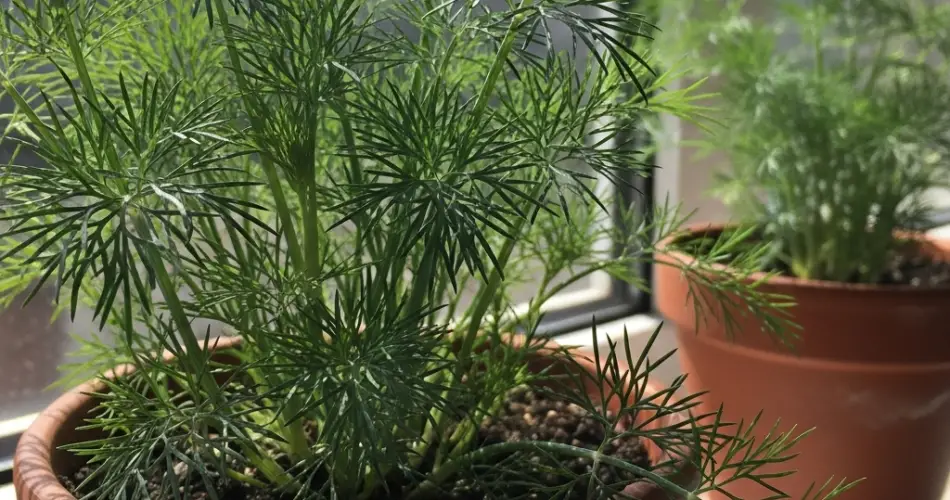Dill is a fragrant and versatile herb that adds a burst of freshness to many dishes, from pickles and soups to fish and salads. While it is often thought of as a garden plant, dill is surprisingly easy to grow in containers. With the right setup and care, you can enjoy a steady supply of this flavorful herb right from your balcony, patio, or kitchen windowsill.
Container gardening with dill is ideal for anyone with limited space or for those who want a manageable herb garden close to their cooking area. This guide will walk you through everything you need to know to grow dill successfully in pots.
Why Grow Dill in Containers?
Growing dill in containers offers several advantages:
-
Space-saving: Perfect for small balconies, patios, or even sunny windows.
-
Mobility: You can move pots to adjust for sunlight or protect plants from harsh weather.
-
Pest management: Containers reduce the chances of soil-borne diseases and pests.
-
Convenience: Having fresh herbs within arm’s reach makes cooking easier and more flavorful.
Container gardening also allows you to stagger plantings, ensuring a continuous supply of dill throughout the growing season.
Choosing the Right Container
Dill grows tall and develops a long taproot, so choosing the right container is important.
-
Depth: Select a pot that is at least 12 inches deep to accommodate root growth.
-
Width: A medium to large container is best if you want multiple plants, though dill also grows well in single deep pots.
-
Drainage: Ensure the pot has drainage holes to prevent waterlogging, which can cause root rot.
Clay or terracotta pots work well because they allow excess moisture to evaporate, but plastic containers are lightweight and easier to move around.
Soil Requirements
Dill thrives in light, well-draining soil. A standard potting mix enriched with organic matter works well. To further improve drainage, mix in sand or perlite.
-
pH level: Slightly acidic to neutral (6.0–7.5) is ideal.
-
Nutrients: Dill doesn’t require overly rich soil. Too much fertilizer can cause the plant to grow tall and weak, reducing its flavor.
Planting Dill in Pots
You can grow dill either from seeds or from young seedlings, though dill is most commonly sown directly.
-
Sow seeds about ¼ inch deep in moist soil. Space seeds about 2 inches apart.
-
Thin seedlings once they are 3–4 inches tall, leaving 6–8 inches between plants to allow for airflow and healthy growth.
-
Succession sowing every 3–4 weeks ensures a continuous harvest throughout the season.
Because dill has a sensitive taproot, transplanting it is not always successful, making direct sowing into containers the best option.
Light and Temperature
Dill loves sunlight. Place your container in a location that receives at least 6 hours of direct sun daily. A south-facing balcony or window is ideal.
-
Temperature range: Dill grows best between 60–75°F (15–24°C).
-
Heat management: In very hot climates, provide partial shade during the hottest hours of the day to prevent wilting.
Watering and Care
-
Watering: Keep the soil evenly moist, but never waterlogged. Water deeply whenever the top inch of soil feels dry.
-
Mulching: Adding a light layer of mulch helps retain soil moisture and reduce temperature fluctuations.
-
Fertilizing: Use a balanced, diluted liquid fertilizer once a month. Avoid overfeeding, as it can make dill grow too quickly and lose flavor intensity.
Harvesting Dill
Dill can be harvested in different stages depending on your needs:
-
Leaves: Begin harvesting once the plant reaches about 6–8 inches tall. Snip outer fronds with clean scissors, leaving the central stem to continue growing.
-
Flowers: Harvest flower umbels when they just begin to open. They are excellent for pickling.
-
Seeds: Allow flowers to dry and turn brown, then cut the seed heads and collect seeds for culinary use or replanting.
To keep dill productive, harvest regularly but avoid cutting more than one-third of the plant at a time.
Common Problems and Solutions
-
Bolting: Dill naturally bolts (flowers) quickly in warm weather. To extend leaf production, harvest frequently and plant successions every few weeks.
-
Weak stems: Caused by lack of sunlight or overcrowding. Ensure proper spacing and sunlight exposure.
-
Aphids or caterpillars: These may occasionally feed on dill. Rinse them off with water or introduce natural predators like ladybugs.
Using Your Dill Harvest
Fresh dill is best used immediately, but you can also preserve it for later:
-
Refrigeration: Store stems in a damp paper towel inside a plastic bag for up to a week.
-
Freezing: Chop and freeze dill in ice cube trays with water or oil for long-term use.
-
Drying: Air-dry or use a dehydrator, though some flavor will be lost compared to freezing.
-
Seeds: Store in airtight jars in a cool, dry place for use in seasoning and future planting.
Conclusion
Dill is a rewarding herb to grow in containers, offering beauty, fragrance, and culinary versatility. With the right pot, soil, and sunlight, you can cultivate a thriving supply of dill even in small spaces. By practicing succession planting, harvesting regularly, and providing consistent care, you’ll enjoy fresh dill for months on end.
Container gardening with dill is simple, space-efficient, and a wonderful way to add homegrown flavor to your meals. Whether you’re a seasoned gardener or a beginner, dill in pots is an easy and satisfying choice.



